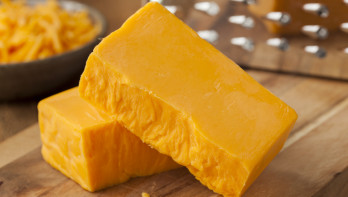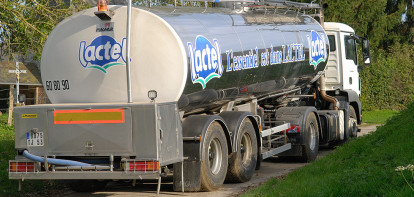Analysis Dairy
Dutch top cheese brand celebrates in privacy
Leerdammer Cheese officially celebrates its 50th anniversary this year. It is an anniversary with mixed feelings. Leerdammer became a hit. Leerdammer Cheese grew to become one of the largest cheese brands in Europe. At the peak of its success, the brand's value was estimated at hundreds of millions of euros, much more than anything else the dairy processor owned. Today, the shine has faded a bit. It seems somewhat less diversified, and many farmers who supply the milk are not as happy as before.
Leerdammer was introduced to the market in 1974 by Baars Cheese, originating from a cross between Gouda and Emmental cheese. The new cheese was developed at NIZO in Ede, which is now an independent food company. Baars immediately set out to turn it into a real branded cheese, and with great success.
However, current owner Lactalis is somewhat quietly celebrating the anniversary, especially for the suppliers and staff. Not really for the surrounding public. A request from Boerenbusiness to also pay attention to the half-century celebration went unanswered. Perhaps not entirely surprising, as Lactalis does not like publicity, and there is also no festive atmosphere between Lactalis and the suppliers. The exodus of farmers, which began under the previous owner, continues. To keep the factories running, a lot of milk has to be bought nowadays.
Foto: Agrifoto
Envy and jealousy
The major Dutch dairy companies viewed the success of the Leerdammer brand for years with a combination of envy and jealousy. There were also several times plans to buy it, but the large cooperatives hesitated due to the rapidly rising price of the brand.
Considerable money was also invested in the development of the cheese brand. Cheese trader Cees Baars quickly sought support from food concern Wessanen, which acquired the brand and the cheese factory De Vijfherenlanden in 1976. In 1982, it also acquired the cheese factory in Dalfsen, where Leerdammer cheeses were also produced. Wessanen also had other dairy factories, including one in Kampen, but they did not produce cheese.
How Leerdammer got its name is not exactly known. The cheese factory in Leerdam is certainly not related to it, as it belonged to Campina. But Leerdammer sounds better than Schoonrewoerder, named after the place where the dairy factory De Vijfheerenlanden is located, and Leerdam has a broader recognition due to, among other things, the glass.
Under the wing of Wessanen, the Leerdammer brand developed well, but around the turn of the century, the publicly traded Wessanen got bogged down in a discussion about its direction and wanted to get rid of the dairy division. Ultimately, in 2001, it was sold for €190 million to the French Fromageries Bel. They further developed the brand, including introducing new flavor variants. They also introduced the cheese to new markets. The exact amount of cheese sold under the Leerdammer brand by the Dutch factories of Bel is not known, but the total cheese production of the factories in Schoonrewoerd and Dalfsen peaked at around 70,000 tons. This was around 2015-2018.
By then, the mood among the suppliers had already somewhat deteriorated. For years, the suppliers had received a competitive milk price, but as early as around 2007/2008, there had been clashes between this group and the management. The Leerdammer suppliers have traditionally been consciously non-cooperative and vocal, partly also small-scale, with some still using group housing systems, although not many. They are mainly located in South Holland, the Gelderse Vallei, the Betuwe, along the IJssel, and in Overijssel.
Conflict over milk price
Between 2010 and 2015, new conflicts arose because many farmers felt that the French owner did not fulfill agreements made about linking their milk price to that of Cono, and they also felt unheard by the French. This led to legal battles. In some of them, the Groupe Bel, as the parent company was now called, was found to be in the wrong and had to rectify the milk money. However, the mood did not improve because Bel did not change its behavior in the eyes of the suppliers. More lawsuits followed, a farmer collective was established in 2017, the Suppliers Association Leerdammer Collective (LVLC), and an increasing number of suppliers left. When Groupe Bel sold the Dutch branch together with a few other companies to competitor Lactalis, there was briefly hope that it would calm down, but the exodus of suppliers did not stop.
Around 2015/2016, at its peak, Leerdammer had about 800 million kilograms of milk, of which it could process approximately 750 to 770 million kilograms. At that time, there were about 1100 suppliers. Those figures are now significantly lower. Precise information is not available, but according to estimates from involved outsiders, about 200 to 250 million kilograms of milk have disappeared, and the number of suppliers is much lower, due to both business closures and switching to other processors. Leerdammer suppliers are also not always the farms with the most promising future. There are quite a few smaller farms, sometimes still using tie-stall barns. Current CEO Jan Verbessem stated at the end of last year that he is looking for new suppliers. However, the question remains how successful this search will be, considering Leerdammer is certainly not the only processor where dairy farmers can turn to.


